Keywords
Language rights
Human rights
Visual epistemologies
Text markup
Unicode
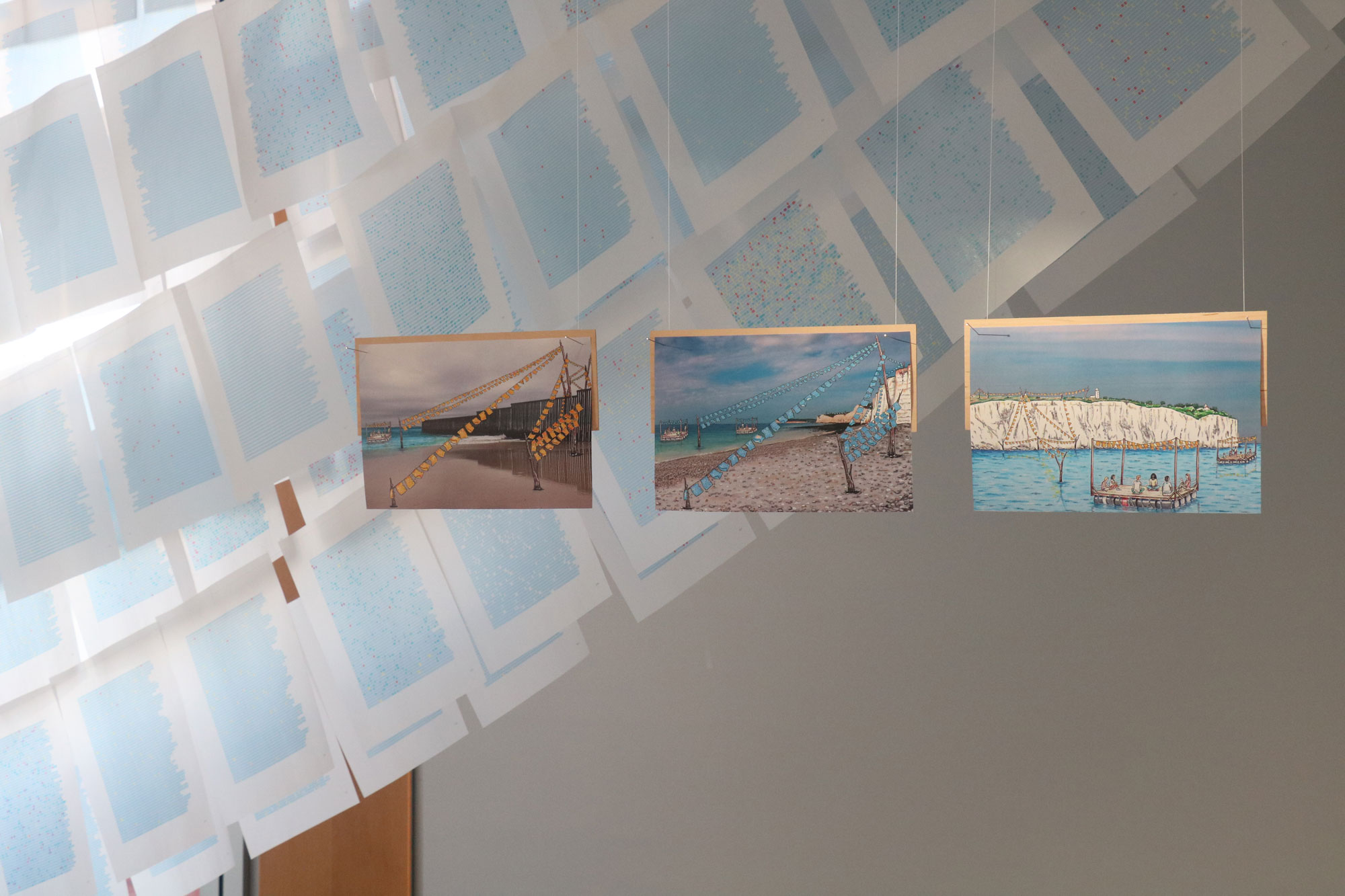
⦿ TEXT IN PROGRESS: more details about this project coming up soon.
“We are faced with two paradoxical and disturbing conclusions and a very demanding challenge. The supposed historic triumph of human rights is leading to an unprecedented degradation of the expectations of a decent life for the majority of the world's population. Human rights have ceased to be a conditionality in the context of international relations; thus, rather than subjects of human rights, individuals and peoples have, at best, been reduced to objects of human rights rhetoric. As for the challenge, it can be phrased in the following terms: Is it still possible to turn human rights into living ruins, a tool for turning despair into hope? I certainly think so.”
— Boaventura de Sousa Santos, 2020 ↗
The project interrogates the limits of Unicode—the promisse of a universal character encoding standard—within the wider failure of Human Rights rhetoric.
2018 — 2019
Funding
CAPES Foundation — Coordination for the Improvement of Higher Education Personnel. Ministry of Education (Brazil)
Home institution
Royal College of Art (London, UK)
Supervision
Prof Dr Teal Triggs — Royal College of Art
Dr Mark Sebba — Lancaster University
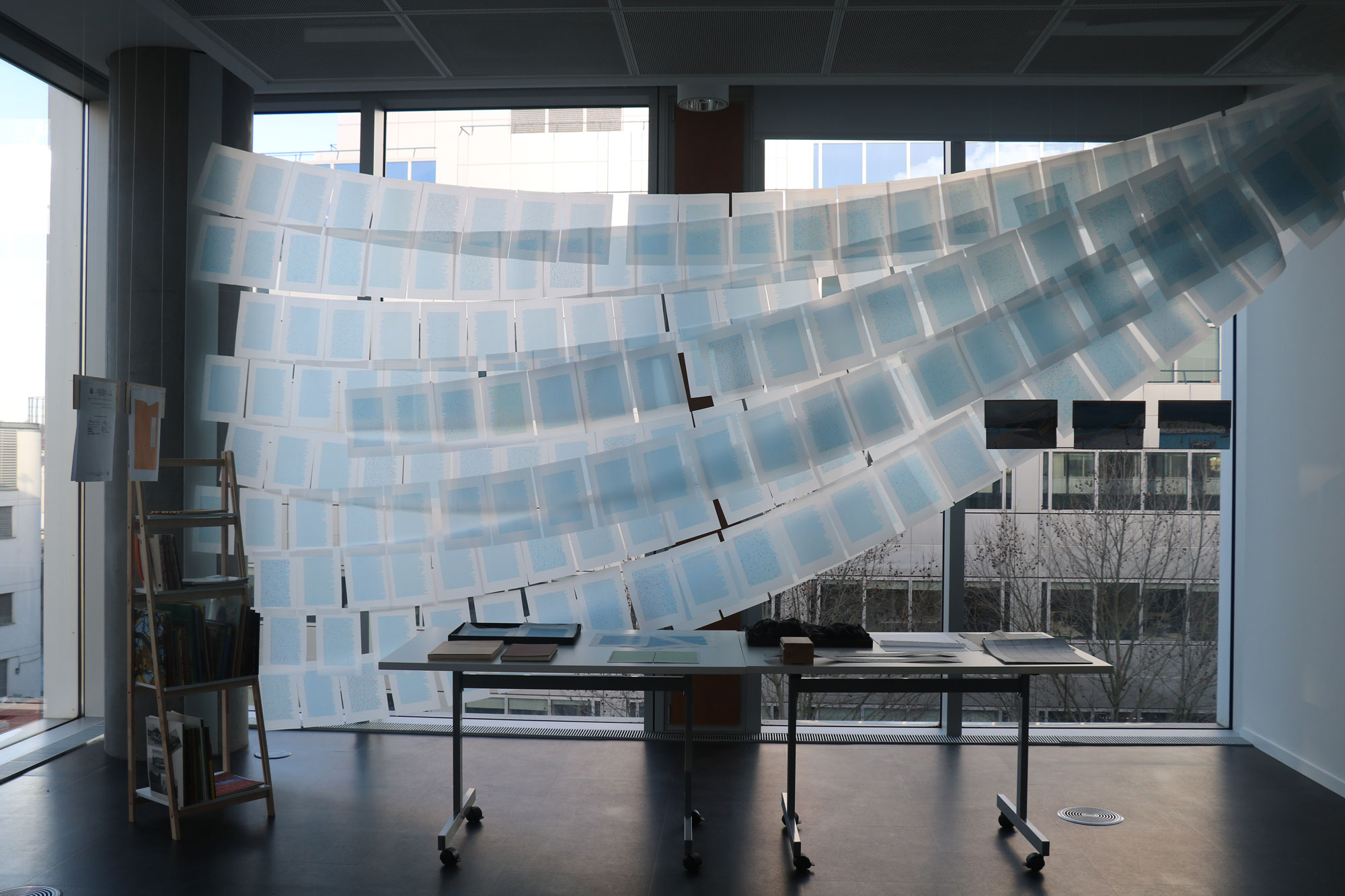
Exhibition: In correspondance with a living archive of indigenous languages. The Media Works, Royal College of Art, London (December 2020).
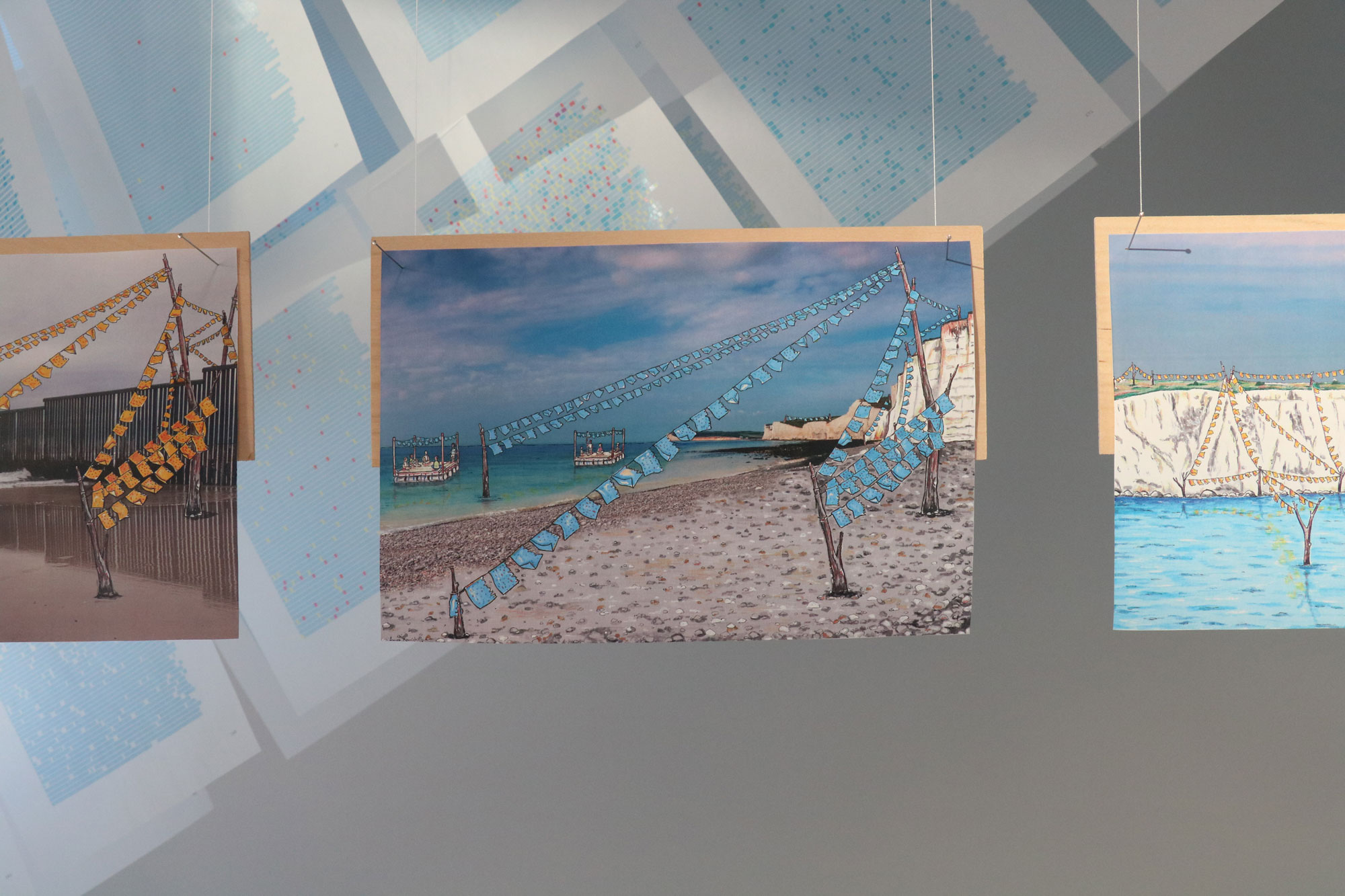
Flags for a peoples’ assembly (or memorial, or celebration...) in Dover (or in Tijuana, or in Eldorado do Carajás...)
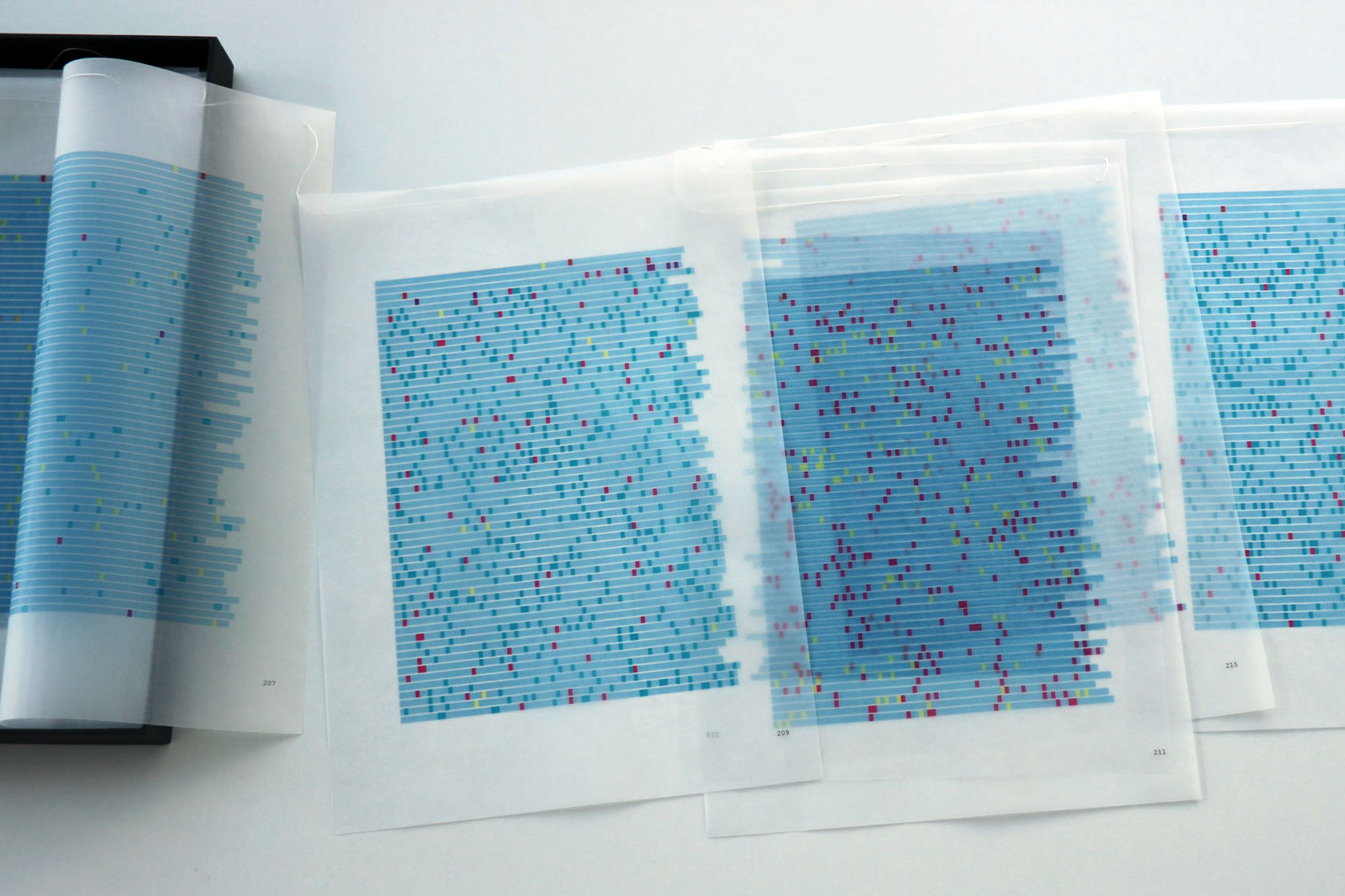
Font as text markup tool: A font was develop to draw correspondence between each character in the text and the Unicode block to which it belongs. The font is composed of thirteen versions: The first version shows all the characters of the “Basic Latin” block, leaving the other characters blank; the second version shows the characters from the “Latin-1 Supplement” block; the third version shows the characters from the “Latin Extended-A” block; then “Latin Extended-B” block; “Latin Extended-C”; and so on. It includes all blocks of the Latin script, and IPA extensions. By overlaying various instances of the same text, each layer being assigned a different version of the font and colour, the result is a graph that colour-codes the text in relation to the Unicode blocks. In this project, the font is used to display the Universal Declaration of Human Rights in different languages. It displays the frequency of “special characters” (characters coming from blocks other than the “Basic Latin” block) in each language.
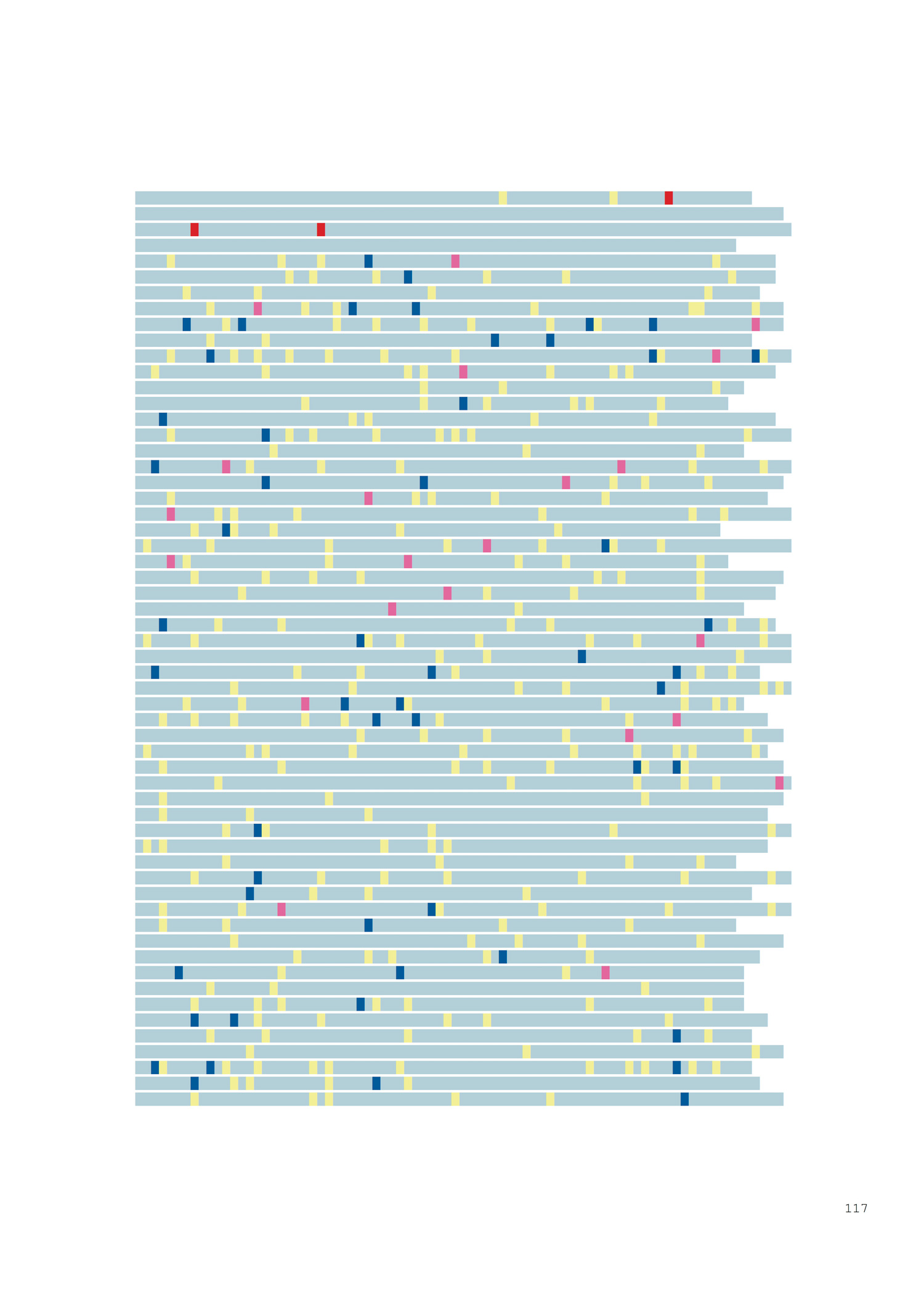
UDHR in Guarani.
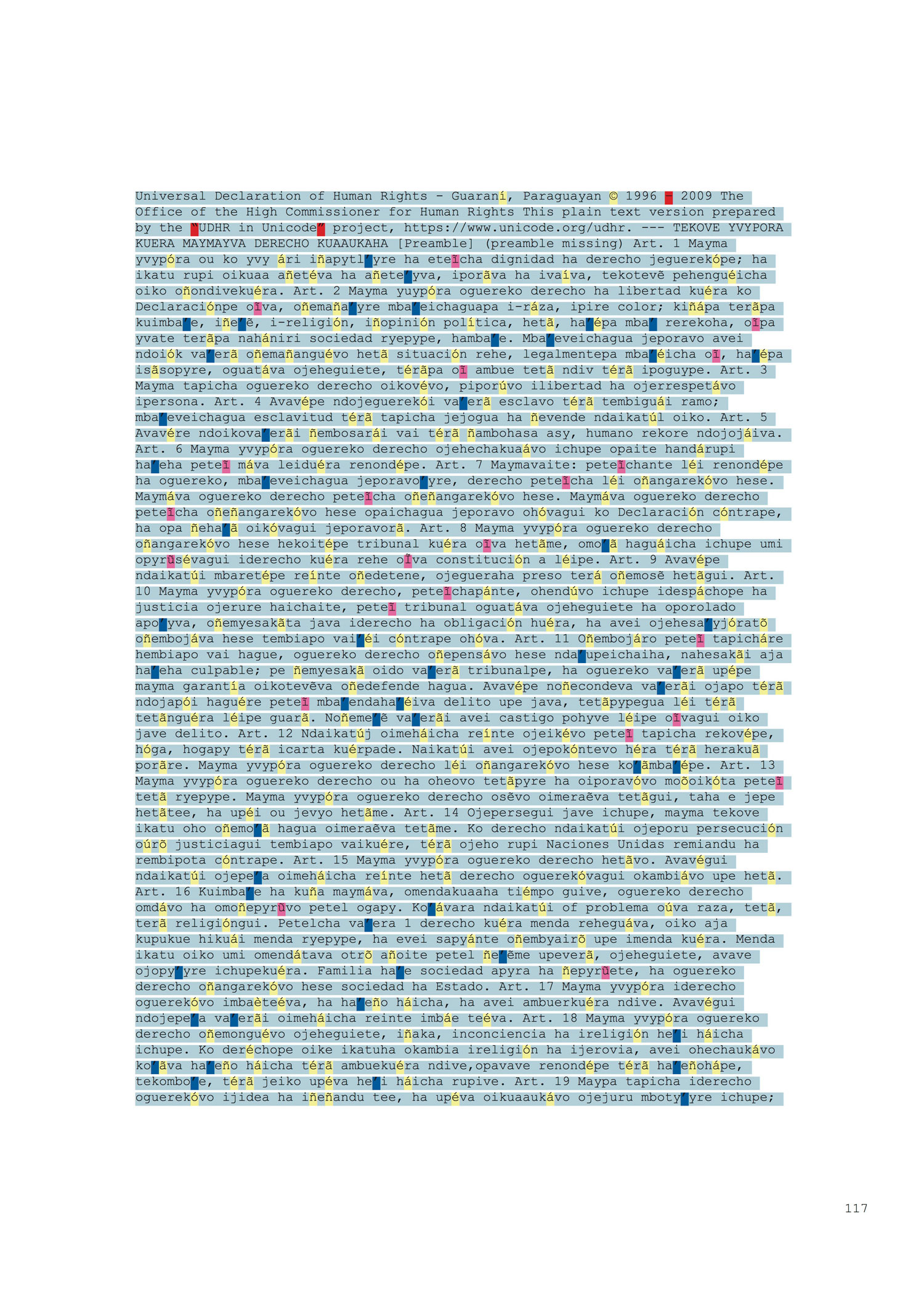
UDHR in Guarani with text overlay.